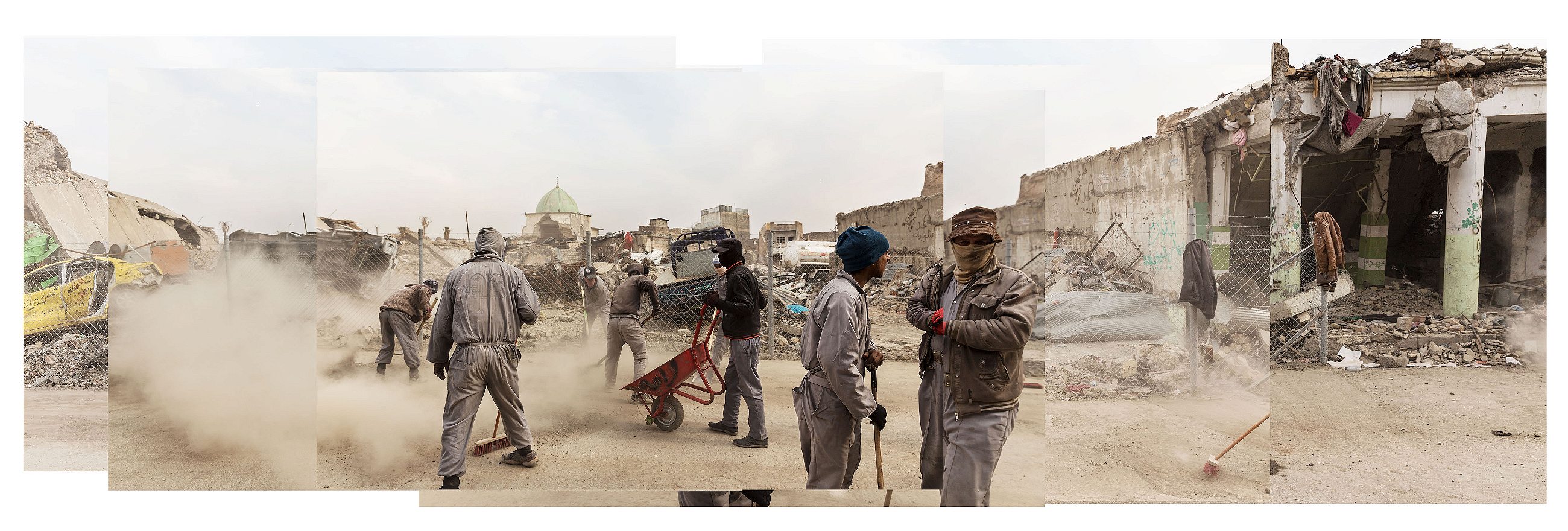Photographer Alexandra Rose Howland traveled across the Mosul highway, capturing images of people and landscape she encountered along the way to portray the complexities of life amid conflict.
The nine-month-long battle for the Iraqi city of Mosul between U.S.-backed Iraqi forces and ISIS came to a grinding end last summer. The main access point for that battle was from the Kurdish controlled city of Erbil, some 55 miles to the east. The two cities are connected by Mosul Road, which, through the course of the fighting, was used by the military, journalists, refugees, and aid workers.
Photographer Alexandra Rose Howland traveled along this highway, photographing the people and landscape she encountered to portray the complexities of life amid conflict. A solo exhibition of some of her work, in collaboration with the British Embassy, opens on May 23 at the Bargehouse Galleries in London. R&K spoke with Howland in New York about her journey through this project.
Roads & Kingdoms: What has the reaction to your project been like?
Alexandra Rose Howland: People have been really surprised at how normal and how calm it is because most of the road is just open space or buildings or markets. I think people are surprised that that is what a war zone looks like, and that such a small section of it is actually this chaotic fighting, or from a Humvee window, or has soldiers in it. So much of Mosul is just abandoned or open fields. So there’s a lot surprise and misunderstanding that it brings.

R&K: Mosul was the first time you’ve worked in a conflict zone. Were any of your own perceptions changed as well?
ARH: I thought it would be a lot more violent and a lot more widespread, and almost impossible to even do the project in the first place.
Then when I got there, I was 30 meters from the frontline, having chai with an Iraqi general. It was weird moments like this that just didn’t make sense in my head—that I can be so close and so immersed in this conflict, but then have these other concerns, like, sleeping on the roof while the soldier next to me is watching porn on his phone.

R&K: Do you have any plans to integrate this project back into Iraq?
ARH: Yeah. A few months ago, the British Embassy approached me and asked me to redo parts of this project in more of a portraiture format, so I went around and found people and then photographed both them and the background to them. It’s an addendum to the Mosul Road project that’s going to be exhibited in Mosul in few months. It will be really interesting to bring these more personalized portraits and individual stories back into the places where they were taken.
R&K: Were there any specific moments that have ended up in the final project that significantly impacted you?
ARH: One of the things I struggled with was that I became so separated from what I was photographing. It sort of goes against what you’re supposed to do as a photographer. We’re always trying to integrate ourselves into these intimate moments. Then I was literally just passing by everything that was happening.
So I’ve been going back through the images to see what I had been photographing when I hadn’t been aware of it at all: like people praying on the side of the road, or kids playing with their donkeys, or people hugging each other. Or one of the main images that I’ve been showing: a family fleeing with water and just a few supplies; they look completely distressed. I didn’t even notice that they were there when I had photographed it.

R&K: How much time did you spend working on this?
ARH: I probably took 10 different trips to Mosul to get the actual images. Then sewing it together has taken probably six to eight months of very tedious work. It’s incredibly tedious to sew kilometers and kilometers of photos together. The files become so big that your computer shuts down completely. So, the actual taking of the images did not take very long. But then the work after that has been the most extraneous.
R&K: What are your plans for the near future?
ARH: I recently did a story on one of the attempted national parks in Iraq that’s just covered in landmines. It was the first environment-focused story I’ve done. So I’m thinking of shifting a bit into more environmental work because I really enjoyed working on it. It also enables you to cover such a wide spread of issues and locations. So I might continue doing that.
